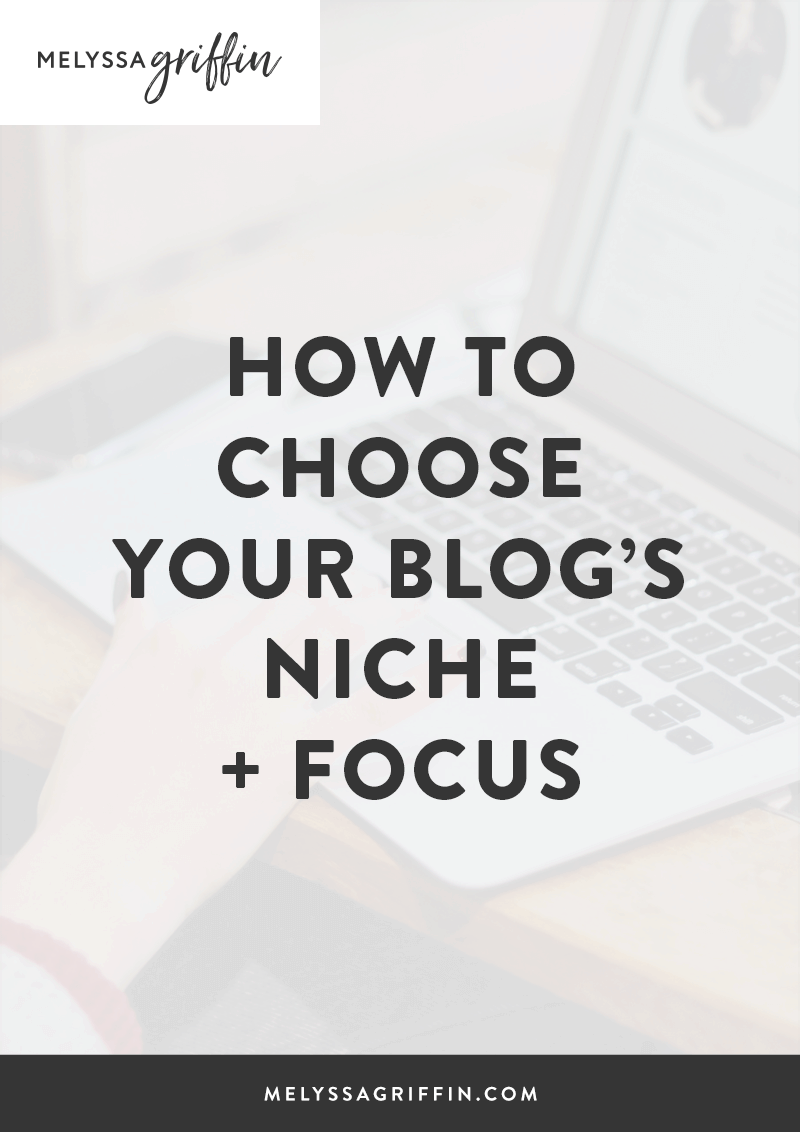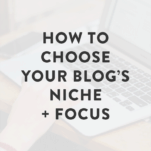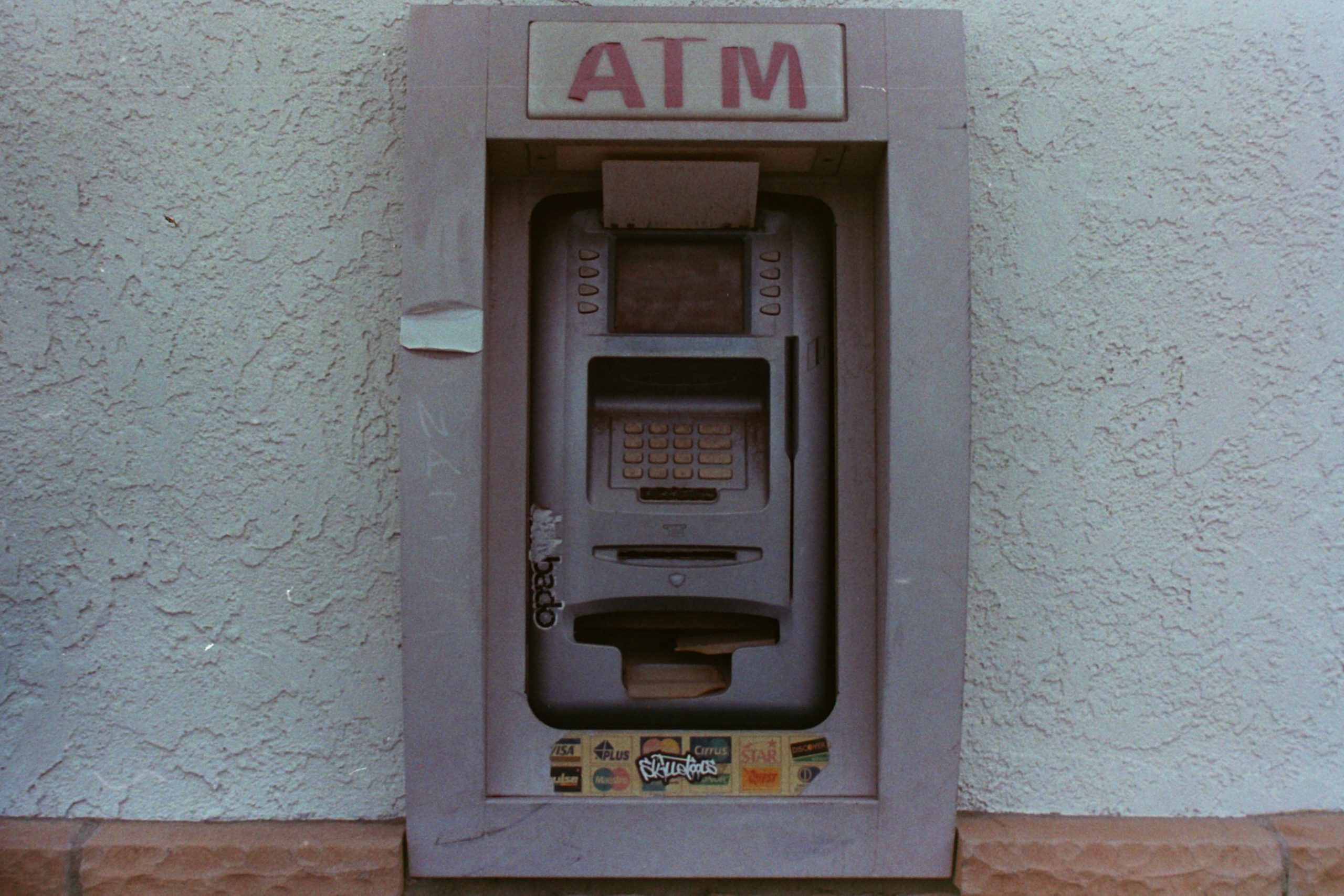
There’s one problem I’ve noticed that seems universal among each blog coaching client I work with — something that is both at the fundamental core of blogging and one of the most difficult things to define about your blog:
Choosing your blog’s niche and focus.
When I started my blog, I was an expat living in Japan, but knew I didn’t want to write a travel blog. A majority of the blogs I followed were DIY blogs, but I wasn’t into the idea of doing crafts everyday, either. I had a lot of ideas and nothing that seemed to tie them into anything cohesive. So I wrote about everything. All the things. My blog was a hodgepodge of anything that interested me. Now, I share much more specific topics and have a more narrowed niche, which has done wonders for building my blog and growing my audience. Today, I want to share some tips for narrowing your blog’s niche, making all those random topics work together in unison, and appealing to your specific audience.
First, what do you want to write about?
Welp, this is a no-brainer. List out some topics you actually want to write about. Don’t worry if they align well together. Just write out the things that you’d enjoy spending hours each week sharing with your readers.
For example: Self-development, happiness, art, DIY projects, community, creativity, travel, inspiration/empowerment, blogging tips, business tips, design, home decor, my life, my dog, goal-setting, and fashion.
Put your topics into similar groups
Now, go back through your list and look for the ways in which some of your topics connect. You definitely don’t need all of your topics to connect, but try to combine them into 3-5 mini groups.
For example, from my list above, I would combine “art, DIY projects, creativity, design, and home decor” into one group.
Think of an “umbrella” category for each group
This is one of the most important steps! Once you’ve created your groups, go back and think of a word that encompasses each of the items within that group. It might be a word from the group itself, or you might need to think of something else. This word should be general, simple, and easy for your readers to understand. In my opinion, this isn’t the place to get creative with funky titles, since you want your readers to immediately understand what your blog is about when they see your main categories listed on your site.
For example, my “art, DIY projects, creativity, design, home decor, and fashion” would become “Creativity.”
Now, you have the main topics for your blog, and you also have the sub-topics that encompass that main category. I find this very helpful when I write my blog posts, because it gives me a lot of topics to write about, but I’m able to easily relate them to both one of my main topics and one of my sub-topics. Also, if you’re stuck on what to write about, sometimes all it takes is looking at your list of sub-topics to get inspired.
But what if your blog’s topics don’t…connect?
In all of the blog coaching sessions I’ve done, my clients are perplexed about what to focus on, when in reality the topics they’re already writing about have the potential to work well together. For example, maybe you want to write a travel blog, but you also love cooking and fashion. Why not share cultural recipes and your eclectic fashion sense? Think about how your topics connect, but most of all, think about who your audience is. It’s okay to write about a few different topics, because your readers are complex people with a myriad of interests. Many of the most popular blogs out there, such as The Huffington Post and Buzzfeed, have lots of topics they focus on, but their topics are still targeted at a specific audience, which makes their posts feel relatable and relevant.
Maybe your audience is mainly self-employed women in their 20s who like to travel. What kinds of things would someone like that be into? In reality, you’ll have a range of different people who visit your site, but try to think about who they are, what they do, what their interests are, and how you can help them. Remembering who your audience is can be hugely important in deciding which topics to focus on. Don’t know who your audience is? Ask! Google Analytics has great tools for doing this, but I’ve also learned a TON about my readers by holding an annual survey, too (like this one!).
Deciding what to focus your blog on can feel like a daunting task, but it really doesn’t have to be! Think about how your interests connect and how you can use them in a way that is meaningful and useful to your specific audience. Keep your list of topics and sub-topics handy so you can refer to it whenever you go to write your next post. You got this!















